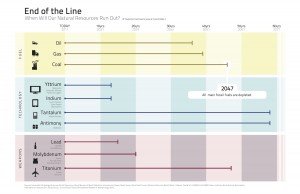There are a couple interesting threats to the security of our future water supply. The first involves depletion of groundwater for agricultural uses. Already, we’re using it at an unsustainable rate, and the future viability of irrigated agriculture is, at this point, somewhat uncertain in some areas. However, as this article points out, there’s more that can be done using existing technology to decrease water usage, like more efficient watering methods (drip irrigation, for example) and construction of more water storage systems. That takes money though, either with higher food prices, and/or government infrastructure investment. In the current political and economic climate, the later is unlikely, so expect higher food prices to hit first before public pressure creates the political will to improve the infrastructure.
The second development that is going to place increasing demands on our water supply is electricity, strangely enough. As this article explains, most modern power plants require large amounts of water in order to cool them. Well, the power plants that aren’t using renewable energy like solar or wind, that is.
Then of course, there’s fracking, which not only pollutes the groundwater, but uses a lot of water as a primary ingredient in the fracturing fluid that’s pumped underground. Sort of a double-whammy there.
So what does this all mean? It means that like many other things, we’re nearing Peak Water, where the supply of water will be less than the demand. Or rather, the supply of clean, drinkable water. We’ll likely be forced to turn to more expensive filtering methods to increase the drinking water supply, and for coastal communities, it’s hard to imagine a world without desalination being key. Costs will increase.



